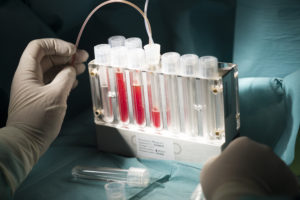A new dual-channel needle for the extraction of oocytes during the IVF process

In vitro fertilisation (IVF) aims to help couples struggling to conceive have a baby. Oocyte retrieval is an intrinsic part of IVF and the number of oocytes (eggs) collected has been directly correlated to the live birth rate. Follicular flushing is a three-step process aiming to boost oocyte yield. A dual-channel needle is used to perform follicular flushing and all existing needles are broadly of similar design. Importantly, a recent meta-analysis has shown no improvement in oocyte numbers or indeed live births with follicular flushing.
Scientists at the University of Oxford have designed a new type of dual-channel needle for the extraction of oocytes during the IVF process. The needle has the potential to increase oocyte yield and causes less damage to the oocytes during the collection process. This could revolutionise IVF by significantly increasing the live birth rate.
Background
The World Health Organisation estimates that 10% of women suffer with subfertility worldwide. In vitro fertilisation (IVF) has revolutionised the field of reproductive medicine, giving couples struggling to conceive the chance to have a baby.
On a European level, data from 2014 indicated that more than 500,000 treatment cycles were performed. In the USA, the equivalent number from 2016 is in excess of 250,000 cycles.
The latest data from the UK, dating from 2016, show that just over 68,000 treatment cycles were conducted leading to 20,028 live births.
The Problem
Even though the number of cycles continues to increase on a worldwide basis, it is evident that there remains significant room for improvement of the live birth rate as a proportion of IVF cycles.
The relationship between oocyte yield and live birth rate has been established in several high-quality reviews. Although biologically plausible, a Cochrane systematic review has demonstrated that follicular flushing does not have an impact on either oocyte yield or live birth rate.
Using parametres reflective of real-life conditions through high-fidelity computer simulation, researchers at the University of Oxford have modelled a typical existing dual-channel oocyte retrieval needle system. This demonstrated approximately a 66% oocyte yield with a proportion of oocytes being crushed against the needle apparatus.
The Solution
A new type of dual-channel oocyte retrieval needle has been developed by a multi-disciplinary team of researchers at the University of Oxford demonstrating an improvement of oocyte yield up to 100%. Furthermore, the new needle system significantly reduces the chance of damage to the oocyte and the corona radiata.
about this technology

